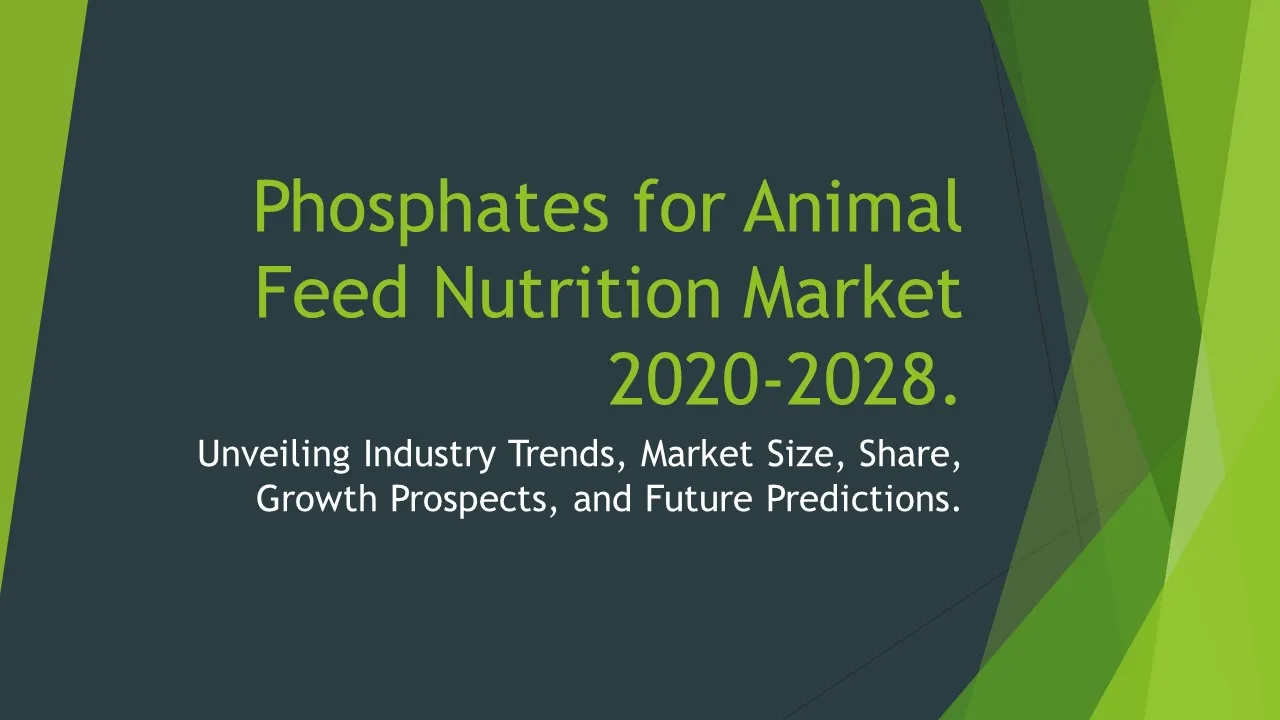Feed Protease Sales
Feed Protease Market Segments - by Product Type (Liquid Feed Protease, Dry Feed Protease, Microencapsulated Feed Protease, Powder Feed Protease, Granular Feed Protease), Application (Swine Feed, Poultry Feed, Ruminant Feed, Aqua Feed, Pet Food), Distribution Channel (Direct Sales, Indirect Sales), Ingredient Type (Bacterial Protease, Fungal Protease, Plant Protease, Animal Protease, Marine Protease), and Region (Asia Pacific, North America, Latin America, Europe, Middle East & Africa) - Global Industry Analysis, Growth, Share, Size, Trends, and Forecast 2025-2035
- Report Preview
- Table Of Content
- Segments
- Methodology
Feed Protease Sales Market Outlook
The global feed protease market is projected to reach USD 1.5 billion by 2033, growing at a CAGR of 6.5% during the forecast period of 2025 to 2033. The rise in livestock production, coupled with the increasing demand for high-quality feed additives, is a significant driver for this market. The growing awareness of the nutritional benefits of protease in feed formulations is leading to an increase in its adoption across various segments. Additionally, advancements in protease production technologies and methods are facilitating the development of more efficient products. Rising concerns regarding animal health and productivity are further propelling the need for protease in feed solutions to enhance nutrient digestibility.
Growth Factor of the Market
The feed protease market is experiencing growth due to several key factors. Firstly, the global demand for animal protein is increasing, driven by a growing population and changing dietary preferences. This trend is pushing livestock producers to invest in additives that optimize feed efficiency and animal health. Secondly, the need for sustainable and environmentally friendly practices in animal husbandry is driving the adoption of enzyme-based solutions, like feed protease, which can help reduce waste and improve feed conversion ratios. Thirdly, regulatory frameworks encouraging the use of natural feed additives are favoring the growth of enzyme markets. Additionally, technological advancements in enzyme formulations and production methods are enabling the introduction of innovative protease products tailored to meet specific animal needs. Finally, the rise of aquaculture as a significant source of protein is also bolstering the demand for specialized feed protease for aquatic species, further contributing to market growth.
Key Highlights of the Market
- The feed protease market is forecasted to grow at a CAGR of 6.5% from 2025 to 2033.
- Liquid feed protease is expected to dominate the market due to its superior effectiveness in improving nutrient digestibility.
- The poultry feed application segment is projected to hold the largest market share due to the rising demand for poultry products.
- Direct sales channels are preferred for distributing feed protease, ensuring better client engagement and education on product benefits.
- Geographically, the Asia Pacific region is anticipated to witness the highest growth rate due to increasing livestock production and feed consumption.
By Product Type
Liquid Feed Protease:
Liquid feed protease is gaining popularity in the market due to its ability to enhance nutrient digestibility and overall performance of livestock. The liquid form allows for easy incorporation into wet feed formulations, making it highly effective for both ruminants and non-ruminants. This type of protease is particularly favored in regions where moisture content in feed is high, thus ensuring even distribution and optimal interaction with substrates. The high solubility and activity levels of liquid feed proteases contribute significantly to their rising demand, as they help reduce feed costs and improve animal growth rates. Additionally, the convenience of handling and dosing liquid proteases in feed mills is another factor driving this segment's growth.
Dry Feed Protease:
Dry feed protease is another significant segment within the feed protease market. This form is commonly used in the pelleting process of animal feeds, where heat stability is crucial. Dry feed protease maintains its activity even when exposed to the high temperatures typically used in feed processing. This type of protease is particularly well-suited for poultry and swine feeds, where efficiency and cost-effectiveness are paramount. Furthermore, dry formulations are easier to store and have a longer shelf life compared to their liquid counterparts. These advantages are expected to sustain the demand for dry feed protease, especially in regions with established livestock industries.
Microencapsulated Feed Protease:
Microencapsulated feed protease is an innovative segment that involves enclosing the enzyme in a protective coating. This technology enhances the stability of proteases against environmental factors, such as temperature and pH levels, which can otherwise diminish their efficacy. Microencapsulation allows for targeted release of the enzyme in the digestive tract, ensuring optimal utilization and improved nutrient absorption. As livestock producers seek more efficient and effective feed solutions, microencapsulated products are becoming increasingly attractive. The ability to customize the release profiles of these enzymes according to specific animal needs further drives their adoption in the market.
Powder Feed Protease:
Powder feed protease is favored for its versatility and ease of incorporation into various feed formulations. This form is particularly popular among feed manufacturers who require flexibility in dosing applications. Powdered proteases offer a concentrated source of enzymes that can enhance the nutritional profile of feed, leading to better animal performance. They are often used in combination with other feed additives to create tailored solutions for specific livestock needs. The growing trend of precision nutrition is further propelling the demand for powdered feed protease as it allows for more accurate and effective formulation of animal diets.
Granular Feed Protease:
Granular feed protease is a less common but emerging segment in the feed protease market. This form is characterized by its larger particle size, which can improve handling characteristics and reduce dust formation during feed processing. Granular formulations can also offer controlled release properties, providing a sustained action of proteases in the animal's digestive system. While still developing, the demand for granular feed protease is anticipated to grow, particularly in specialty feed applications where targeted delivery of enzymes is desired. The unique advantages of granular formulations are expected to attract attention from livestock producers seeking novel feed solutions.
By Application
Swine Feed:
The swine feed application segment is one of the largest consumers of feed proteases due to the significant nutritional requirements of pigs during their growth stages. Feed proteases play a crucial role in enhancing protein digestibility, which is vital for the overall health and growth performance of swine. As pork production continues to rise globally, the demand for effective feed additives like proteases is also increasing. Livestock producers are becoming more aware of the benefits of using proteases to reduce feed costs and improve feed conversion rates, leading to a growing trend in this application segment. Additionally, the growing concern regarding the use of antibiotics in swine production is driving the adoption of proteases as a natural alternative to improve gut health and performance.
Poultry Feed:
Poultry feed represents a major application segment for feed proteases, reflecting the high demand for poultry products worldwide. The incorporation of proteases in poultry feed formulations significantly improves the digestibility of protein-rich ingredients, thus maximizing nutrient absorption and growth rates in birds. With the poultry industry increasingly focused on enhancing feed efficiency and reducing production costs, proteases are becoming essential components of modern poultry diets. Moreover, the pressure to produce healthier poultry products has led to a rise in the use of natural feed additives like proteases, which contribute to improved gut health and overall welfare of the birds, further supporting their increasing use in poultry feed.
Ruminant Feed:
In the ruminant feed application segment, the role of feed proteases is critical in enhancing the digestibility of fibrous feed materials. Ruminants, such as cattle and sheep, require specific nutritional formulations to optimize their health and production yields. By incorporating proteases into their diets, farmers can ensure better utilization of protein sources, resulting in improved milk production and growth rates. Additionally, the growing trend towards sustainable farming practices has led to an increased focus on optimizing feed efficiency in ruminants, making proteases a vital component of feed formulations. As the demand for dairy and beef products continues to rise, so does the necessity for innovative feed solutions, including proteases.
Aqua Feed:
The aqua feed segment is increasingly recognizing the importance of feed proteases in promoting growth and health in fish and other aquatic species. Proteases enhance the digestibility of feed ingredients, which is essential for the efficient growth of aquatic animals. As aquaculture expands to meet global protein demands, the use of protease in aqua feed formulations is becoming more prevalent. Furthermore, as the industry seeks to reduce feed costs while maximizing production efficiency, proteases offer a viable solution by improving nutrient availability. The increasing awareness of health and disease management in aquaculture is also driving the adoption of proteases, which contribute to improved feed quality and animal welfare.
Pet Food:
The pet food segment is gaining momentum in the feed protease market as pet owners increasingly prioritize the health and well-being of their animals. Feed proteases are being integrated into pet food formulations to enhance the digestibility of proteins and other nutrients, leading to improved health outcomes for pets. The trend towards premiumization in pet food is also driving demand for specialized formulations that include proteases tailored to specific dietary needs. As the pet food industry evolves, with a focus on natural and holistic ingredients, the integration of feed proteases is expected to become more common, further supporting the growth of this application segment.
By Distribution Channel
Direct Sales:
Direct sales channels are becoming increasingly popular in the feed protease market due to their ability to foster strong relationships between manufacturers and end users. This approach allows for personalized service and direct communication, enabling customers to gain an in-depth understanding of product benefits and applications. Direct sales also provide manufacturers with valuable feedback from clients regarding their products' performance in the field, which can inform future developments. As livestock producers seek reliable and effective feed solutions, the direct sales model is seen as an efficient way to meet their needs and build customer loyalty.
Indirect Sales:
Indirect sales channels, including distributors and retailers, play a significant role in the feed protease market, allowing manufacturers to reach a broader customer base. These channels facilitate availability and accessibility of feed protease products, particularly in regions where direct sales may be less feasible. Distributors often have established networks with livestock producers, making them valuable partners for manufacturers looking to expand their market presence. However, the reliance on indirect sales can sometimes lead to a dilution of product information, making it essential for manufacturers to ensure that their distributors are well-trained and knowledgeable about the benefits and applications of their products.
By Ingredient Type
Bacterial Protease:
Bacterial proteases are widely used in the feed protease market due to their effectiveness in breaking down complex proteins in feed. These enzymes are derived from various bacteria that thrive in different environmental conditions, allowing for the production of proteases that can function optimally in diverse feed formulations. With the increasing focus on sustainable protein sources, bacterial proteases are gaining popularity as they can help reduce the reliance on traditional protein sources while improving nutrient digestibility. The versatility and efficacy of bacterial proteases make them a critical component of modern animal feeds, driving their adoption across various livestock applications.
Fungal Protease:
Fungal proteases offer unique advantages due to their ability to function at various pH levels and temperatures. These enzymes are derived from fungi such as Aspergillus and Trichoderma, which are known for their robust proteolytic activity. Fungal proteases are particularly effective in breaking down plant proteins, making them suitable for use in ruminant feeds where fibrous ingredients are prevalent. The growing trend towards natural and organic feed formulations is also bolstering the demand for fungal proteases, as they align with the preferences of producers seeking sustainable and effective feed solutions. As research continues to uncover new applications and benefits of fungal proteases, their role in the feed protease market is expected to expand.
Plant Protease:
Plant proteases are derived from various plant sources and are increasingly being integrated into animal feed formulations as a natural alternative to microbial enzymes. These proteases are particularly appealing in organic and non-GMO feed applications, aligning with the preferences of consumers and producers who prioritize sustainability. Plant proteases can enhance the nutritional value of feed by improving protein digestibility, which is crucial for animal growth and health. The growing trend towards plant-based diets for livestock is further driving the demand for plant proteases, as they contribute to the formulation of healthier and more environmentally friendly animal diets.
Animal Protease:
Animal proteases are sourced from animal tissues and are traditionally used in various animal feed formulations. While their usage may be less prevalent due to regulatory restrictions and consumer preferences for plant-based or microbial enzymes, animal proteases can still provide significant benefits in specific applications. They are particularly effective in improving protein digestibility in carnivorous species and can enhance the overall nutritional quality of feeds. The demand for animal proteases may remain steady in niche applications, particularly in high-value livestock or exotic animal feeds, where performance and growth rates are paramount.
Marine Protease:
Marine proteases, derived from marine organisms such as fish and crustaceans, are emerging as a novel ingredient type in the feed protease market. These enzymes possess unique properties that can enhance the digestibility of seafood-based feeds, particularly in aquaculture. The growing interest in sustainable aquaculture practices has led to an increased focus on marine proteases, as they can effectively break down complex marine proteins while promoting healthier growth in aquatic species. As the aquaculture sector continues to expand and evolve, the adoption of marine proteases in feed formulations is expected to grow, driven by the need for high-quality and efficient feed solutions.
By Region
The Asia Pacific region is anticipated to dominate the feed protease market, accounting for nearly 40% of the global market share by 2033. The robust growth in livestock production and aquaculture practices in countries like China, India, and Vietnam is significantly contributing to this trend. With increasing meat and dairy consumption, producers in this region are actively seeking innovative solutions to enhance feed efficiency and animal health. The growing emphasis on sustainable livestock management practices, coupled with supportive government initiatives, is also driving investments in feed additives, including proteases, thereby bolstering the market in this region at a CAGR of 7.5% during the forecast period.
North America is expected to be the second-largest market for feed protease, primarily driven by the United States and Canada, where a strong focus on livestock productivity and feed quality exists. The increasing adoption of advanced feed additives to optimize animal nutrition is propelling the growth of this market segment. With a heightened awareness of animal welfare and health, producers are turning to proteases as a natural means to enhance feed efficiency and minimize environmental impact. The market in North America is projected to grow at a CAGR of 6.0% through 2033, supported by ongoing research and development in feed additives and changing consumer preferences towards sustainable animal production.
Opportunities
The feed protease market presents numerous opportunities as the demand for animal protein continues to escalate globally. With the expansion of the livestock and aquaculture sectors, there is a growing need for efficient feed solutions that can enhance nutrient digestibility and optimize growth rates. This demand opens avenues for innovation in enzyme formulations, including the development of customized proteases tailored to specific animal needs and feed compositions. Additionally, the increasing focus on sustainable and organic farming practices is driving the demand for natural feed additives, including plant-based and microbial proteases. As producers seek to reduce their reliance on synthetic additives, the opportunities for developing novel and effective feed protease products are significant.
Moreover, continuous advancements in biotechnology and enzyme production technologies are paving the way for the introduction of more potent and effective proteases. These innovations can lead to improved feed formulations that not only enhance animal productivity but also contribute to reducing environmental footprints associated with livestock production. The potential for collaboration between enzyme manufacturers and feed producers can further unlock new opportunities for growth in this market. By leveraging combined expertise, stakeholders can develop innovative solutions that address the evolving challenges and demands of the feed industry. As awareness regarding the importance of nutrition in livestock health and productivity continues to grow, the feed protease market is well-positioned to capitalize on these opportunities.
Threats
Despite the promising growth outlook for the feed protease market, several threats could hinder its progress. One of the primary challenges is the regulatory landscape surrounding the use of feed additives, which can be stringent and vary by region. This complexity may create barriers for new entrants and existing players looking to expand their product offerings. Additionally, the rising cost of raw materials for protease production, particularly those sourced from natural ingredients, could impact profitability and pricing strategies for manufacturers. As feed producers seek to optimize costs, they may be hesitant to invest in higher-priced feed additives, including proteases, which could limit market growth.
Moreover, the increasing availability of alternative feed additives and competing enzyme products presents a significant threat to the feed protease market. With the rapid evolution of animal nutrition science, producers may explore other avenues for enhancing feed efficiency that do not involve proteases. This competition can lead to market fragmentation and price pressures within the industry. Furthermore, changing consumer preferences and concerns regarding animal welfare can affect the demand for specific feed additives, including those derived from animal sources. As the market landscape continues to evolve, stakeholders in the feed protease sector must remain vigilant and adaptable to navigate these threats effectively.
Competitor Outlook
- Novozymes A/S
- DuPont de Nemours, Inc.
- AB Enzymes GmbH
- DSM Nutritional Products
- Adisseo
- Alltech, Inc.
- Kemin Industries, Inc.
- Scantibodies Laboratory, Inc.
- Enzyme Development Corporation
- Biocatalysts Limited
- Biome Technologies plc
- Romer Labs Division Holding GmbH
- Kraft Foods Group, Inc.
- Syngenta AG
- Evonik Industries AG
The competitive landscape of the feed protease market is characterized by a mix of established global players and emerging companies that are innovating to capture market share. Leading companies like Novozymes and DuPont have invested heavily in research and development to create enzyme solutions tailored for specific livestock applications, ensuring their products meet the evolving needs of producers. These companies leverage their extensive distribution networks and global presence to dominate the market, providing comprehensive support and consultation services to their clients. As consumer demand for healthier and more sustainable animal products continues to grow, these companies are well-positioned to respond with innovative feed solutions that enhance animal performance and welfare.
Emerging players in the feed protease market are also making significant strides by focusing on niche markets and specialized enzyme formulations. Companies like Biocatalysts and Enzyme Development Corporation are developing novel proteases derived from unique sources, catering to specific applications such as aquaculture and pet food. This strategic focus on innovation and customized solutions is allowing these companies to carve out their own market segments and respond effectively to consumer demands for high-quality, effective feed additives. Collaborations and partnerships with feed manufacturers and livestock producers are also becoming increasingly common, enabling these companies to enhance their product offerings and expand their market reach.
Moreover, the feed protease market is witnessing a trend towards mergers and acquisitions, as larger companies seek to consolidate their positions and gain access to new technologies and markets. For instance, major players like DSM and Kemin Industries have made strategic acquisitions to strengthen their portfolios of enzyme solutions. These moves not only enhance their product offerings but also provide them with a competitive edge in an increasingly crowded market. As the industry continues to evolve, the ability to innovate and adapt will be crucial for companies looking to maintain their market presence and drive growth in the feed protease segment.
1 Appendix
- 1.1 List of Tables
- 1.2 List of Figures
2 Introduction
- 2.1 Market Definition
- 2.2 Scope of the Report
- 2.3 Study Assumptions
- 2.4 Base Currency & Forecast Periods
3 Market Dynamics
- 3.1 Market Growth Factors
- 3.2 Economic & Global Events
- 3.3 Innovation Trends
- 3.4 Supply Chain Analysis
4 Consumer Behavior
- 4.1 Market Trends
- 4.2 Pricing Analysis
- 4.3 Buyer Insights
5 Key Player Profiles
- 5.1 Adisseo
- 5.1.1 Business Overview
- 5.1.2 Products & Services
- 5.1.3 Financials
- 5.1.4 Recent Developments
- 5.1.5 SWOT Analysis
- 5.2 Syngenta AG
- 5.2.1 Business Overview
- 5.2.2 Products & Services
- 5.2.3 Financials
- 5.2.4 Recent Developments
- 5.2.5 SWOT Analysis
- 5.3 Alltech, Inc.
- 5.3.1 Business Overview
- 5.3.2 Products & Services
- 5.3.3 Financials
- 5.3.4 Recent Developments
- 5.3.5 SWOT Analysis
- 5.4 Novozymes A/S
- 5.4.1 Business Overview
- 5.4.2 Products & Services
- 5.4.3 Financials
- 5.4.4 Recent Developments
- 5.4.5 SWOT Analysis
- 5.5 AB Enzymes GmbH
- 5.5.1 Business Overview
- 5.5.2 Products & Services
- 5.5.3 Financials
- 5.5.4 Recent Developments
- 5.5.5 SWOT Analysis
- 5.6 Biocatalysts Limited
- 5.6.1 Business Overview
- 5.6.2 Products & Services
- 5.6.3 Financials
- 5.6.4 Recent Developments
- 5.6.5 SWOT Analysis
- 5.7 Evonik Industries AG
- 5.7.1 Business Overview
- 5.7.2 Products & Services
- 5.7.3 Financials
- 5.7.4 Recent Developments
- 5.7.5 SWOT Analysis
- 5.8 Biome Technologies plc
- 5.8.1 Business Overview
- 5.8.2 Products & Services
- 5.8.3 Financials
- 5.8.4 Recent Developments
- 5.8.5 SWOT Analysis
- 5.9 Kemin Industries, Inc.
- 5.9.1 Business Overview
- 5.9.2 Products & Services
- 5.9.3 Financials
- 5.9.4 Recent Developments
- 5.9.5 SWOT Analysis
- 5.10 DuPont de Nemours, Inc.
- 5.10.1 Business Overview
- 5.10.2 Products & Services
- 5.10.3 Financials
- 5.10.4 Recent Developments
- 5.10.5 SWOT Analysis
- 5.11 Kraft Foods Group, Inc.
- 5.11.1 Business Overview
- 5.11.2 Products & Services
- 5.11.3 Financials
- 5.11.4 Recent Developments
- 5.11.5 SWOT Analysis
- 5.12 DSM Nutritional Products
- 5.12.1 Business Overview
- 5.12.2 Products & Services
- 5.12.3 Financials
- 5.12.4 Recent Developments
- 5.12.5 SWOT Analysis
- 5.13 Scantibodies Laboratory, Inc.
- 5.13.1 Business Overview
- 5.13.2 Products & Services
- 5.13.3 Financials
- 5.13.4 Recent Developments
- 5.13.5 SWOT Analysis
- 5.14 Enzyme Development Corporation
- 5.14.1 Business Overview
- 5.14.2 Products & Services
- 5.14.3 Financials
- 5.14.4 Recent Developments
- 5.14.5 SWOT Analysis
- 5.15 Romer Labs Division Holding GmbH
- 5.15.1 Business Overview
- 5.15.2 Products & Services
- 5.15.3 Financials
- 5.15.4 Recent Developments
- 5.15.5 SWOT Analysis
- 5.1 Adisseo
6 Market Segmentation
- 6.1 Feed Protease Sales Market, By Application
- 6.1.1 Swine Feed
- 6.1.2 Poultry Feed
- 6.1.3 Ruminant Feed
- 6.1.4 Aqua Feed
- 6.1.5 Pet Food
- 6.2 Feed Protease Sales Market, By Product Type
- 6.2.1 Liquid Feed Protease
- 6.2.2 Dry Feed Protease
- 6.2.3 Microencapsulated Feed Protease
- 6.2.4 Powder Feed Protease
- 6.2.5 Granular Feed Protease
- 6.3 Feed Protease Sales Market, By Ingredient Type
- 6.3.1 Bacterial Protease
- 6.3.2 Fungal Protease
- 6.3.3 Plant Protease
- 6.3.4 Animal Protease
- 6.3.5 Marine Protease
- 6.4 Feed Protease Sales Market, By Distribution Channel
- 6.4.1 Direct Sales
- 6.4.2 Indirect Sales
- 6.1 Feed Protease Sales Market, By Application
7 Competitive Analysis
- 7.1 Key Player Comparison
- 7.2 Market Share Analysis
- 7.3 Investment Trends
- 7.4 SWOT Analysis
8 Research Methodology
- 8.1 Analysis Design
- 8.2 Research Phases
- 8.3 Study Timeline
9 Future Market Outlook
- 9.1 Growth Forecast
- 9.2 Market Evolution
10 Geographical Overview
- 10.1 Europe - Market Analysis
- 10.1.1 By Country
- 10.1.1.1 UK
- 10.1.1.2 France
- 10.1.1.3 Germany
- 10.1.1.4 Spain
- 10.1.1.5 Italy
- 10.1.1 By Country
- 10.2 Asia Pacific - Market Analysis
- 10.2.1 By Country
- 10.2.1.1 India
- 10.2.1.2 China
- 10.2.1.3 Japan
- 10.2.1.4 South Korea
- 10.2.1 By Country
- 10.3 Latin America - Market Analysis
- 10.3.1 By Country
- 10.3.1.1 Brazil
- 10.3.1.2 Argentina
- 10.3.1.3 Mexico
- 10.3.1 By Country
- 10.4 North America - Market Analysis
- 10.4.1 By Country
- 10.4.1.1 USA
- 10.4.1.2 Canada
- 10.4.1 By Country
- 10.5 Feed Protease Sales Market by Region
- 10.6 Middle East & Africa - Market Analysis
- 10.6.1 By Country
- 10.6.1.1 Middle East
- 10.6.1.2 Africa
- 10.6.1 By Country
- 10.1 Europe - Market Analysis
11 Global Economic Factors
- 11.1 Inflation Impact
- 11.2 Trade Policies
12 Technology & Innovation
- 12.1 Emerging Technologies
- 12.2 AI & Digital Trends
- 12.3 Patent Research
13 Investment & Market Growth
- 13.1 Funding Trends
- 13.2 Future Market Projections
14 Market Overview & Key Insights
- 14.1 Executive Summary
- 14.2 Key Trends
- 14.3 Market Challenges
- 14.4 Regulatory Landscape
Segments Analyzed in the Report
The global Feed Protease Sales market is categorized based on
By Product Type
- Liquid Feed Protease
- Dry Feed Protease
- Microencapsulated Feed Protease
- Powder Feed Protease
- Granular Feed Protease
By Application
- Swine Feed
- Poultry Feed
- Ruminant Feed
- Aqua Feed
- Pet Food
By Distribution Channel
- Direct Sales
- Indirect Sales
By Ingredient Type
- Bacterial Protease
- Fungal Protease
- Plant Protease
- Animal Protease
- Marine Protease
By Region
- Asia Pacific
- North America
- Latin America
- Europe
- Middle East & Africa
Key Players
- Novozymes A/S
- DuPont de Nemours, Inc.
- AB Enzymes GmbH
- DSM Nutritional Products
- Adisseo
- Alltech, Inc.
- Kemin Industries, Inc.
- Scantibodies Laboratory, Inc.
- Enzyme Development Corporation
- Biocatalysts Limited
- Biome Technologies plc
- Romer Labs Division Holding GmbH
- Kraft Foods Group, Inc.
- Syngenta AG
- Evonik Industries AG
- Publish Date : Jan 20 ,2025
- Report ID : AG-453
- No. Of Pages : 100
- Format : |
- Ratings : 4.5 (110 Reviews)









